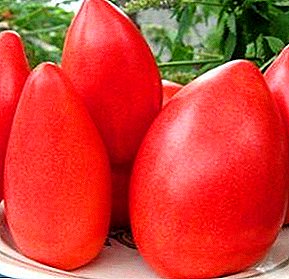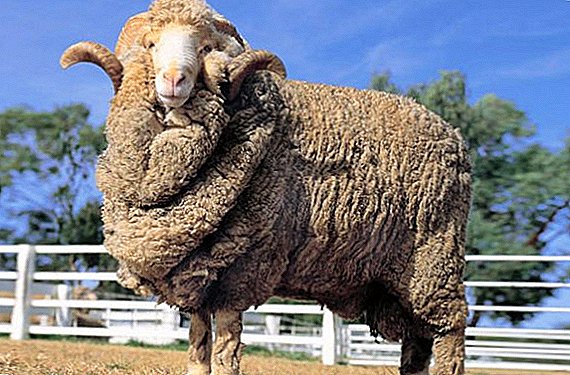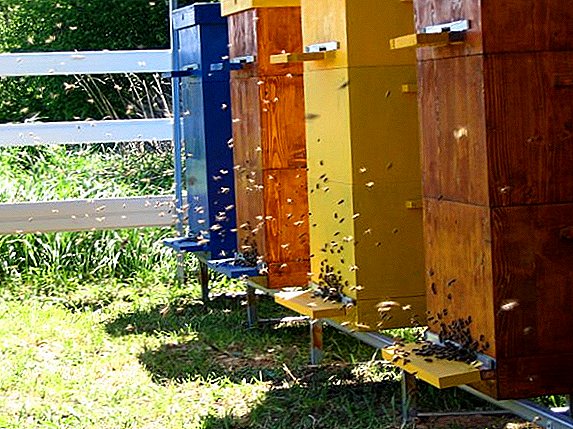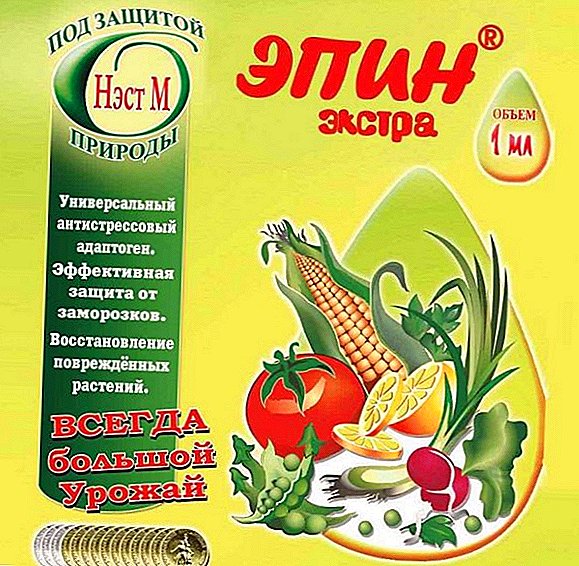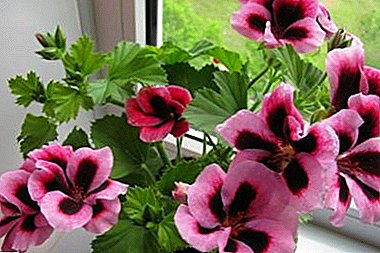 More and more poultry farmers grow quails not only for obtaining a large number of healthy eggs, but also for selling tasty, flavorful and tender meat, which is very popular in the market. Let's see what the features of the Pharaoh quail breed, what are their productivity indicators and what conditions they need to provide for a comfortable life and healthy development.
More and more poultry farmers grow quails not only for obtaining a large number of healthy eggs, but also for selling tasty, flavorful and tender meat, which is very popular in the market. Let's see what the features of the Pharaoh quail breed, what are their productivity indicators and what conditions they need to provide for a comfortable life and healthy development.
Description and features of the breed
Pharaoh is the only one quail meat breed, derived from domesticated Japanese quail. It was decided to create it precisely because of the need to obtain large quail carcasses.
In the post-Soviet latitudes, two types of quail are in demand - the egg line of the Japanese quail and the pharaohs.
Did you know? There is no allergy to quail eggs, with very few exceptions.
Inference history
In the 1960s, the famous breeder A. Marsh in the United States brought out the quail Pharaoh. The creation of this breed was attended by Japanese quail, Texas white and marble quail. 
Exterior
Although most of their lives these birds are destined to spend in a cage, the color they have camouflage, and if necessary they will be easy to merge with the outside world. Dark shades prevail - brown, black and white are combined together. This color is not too decorative, because of what birds do not have a good presentation. Pharaohs have an oblong body, short tail, small wings, a sharp black beak and small eyes. When properly kept, the birds are quite plump.
Important! The loss of feathers in quails may indicate drafts in the room for their maintenance.
How to distinguish the female from the male
Distinguish individuals of different sexes among themselves in color and build. The male plumage usually has an ocher-yellow or red color without dots or spots. The female has a variegated plumage. The "mask" on the male's head has a much more distinct look than that of the female. Males have a larger proportion of head and body size, while females have a more elegant head. Males also have a sharper voice.
Video: how to distinguish the floor of quail
Performance Indicators
The pharaohs have the following characteristics of productivity:
- the weight of the female is from 300 to 350 grams, and the weight of the male is from 180 to 200 grams;
- meat yield in females is 72.8%, and in males - 72.4%;
- start from 6 weeks;
- from 200 to 220 eggs a year;
- the weight of each egg is from 12 to 16 grams.
Learn how to test quail eggs for freshness and quickly break, what useful properties a quail egg shell has, and when the quail egg production period comes and how to contain quail eggs.
Necessary conditions for the content
Care of quails is very simple, anyone can solve this problem at any age. The main thing is to clean the litter, to feed and water consistently, and also to collect eggs.
Room Requirements
Ideal room for quail - warm, dry, well ventilated. In the room in summer and winter fresh air should flow, but there should be no draft. There should be light at least 17 hours with breaks. The best quail rush when lighting 20 hours a day.  Perfect air humidity for pharaohs is considered from 60 to 70%.
Perfect air humidity for pharaohs is considered from 60 to 70%.
Temperature conditions should be from +20 to + 22 ° С. The minimum possible temperature is 18 ° С, and the maximum is 25 ° С.
Important! Lighting in the room should be no brighter than 20 lux. With a brighter light, birds can become restless, pugnacious and nervous.
Cells
The cage should be specifically designed to contain quails. Cages for any other birds are not suitable. The best option are multi-tier structures.
For chicks
For chicks using these types of cells:
- brooder (from birth to 10 days of life);
- open cell (from 10 to 25 days of life);
- cage for young stock (from 25 to 45 days of life).
In the brooder there is a heating and lighting system. The mesh cells should be 10x10 mm, and the best place to put plywood on the floor. Feeders use trough, place them on the inside of the cage, and drinkers install a flute.  In a cell of the second type, the size of the cell of the wall is already 24x24 mm, and the cell of the bottom is 16x24 mm. Feeders in this cage are placed outside, and nipple drinkers are used for drinking.
In a cell of the second type, the size of the cell of the wall is already 24x24 mm, and the cell of the bottom is 16x24 mm. Feeders in this cage are placed outside, and nipple drinkers are used for drinking.
In cages for young stock, the size of the bottom cells is the same as in the previous cell type, but the grid cells are larger - 24x48 mm. Feeders and drinkers - as in the previous version.
Important! When breeding quails to get meat you need to keep the females and males separately.
For adults quail
On the 45th day of the bird’s life it is already possible to relocate to more spacious and free cells. The size of the grid cell should be 32x48 mm. Material - galvanized mesh or metal. Feeding troughs and drinkers in adult birds are located outside the cage, but are easily accessible for birds. The height of the structure is not more than 20 centimeters.  In a cage for adult birds, there should already be trays for collecting eggs and waste. If they are not made, the litter will fall on the eggs, which can cause infections and diseases. Clean up the litter is necessary every day, and the water is changed every three days.
In a cage for adult birds, there should already be trays for collecting eggs and waste. If they are not made, the litter will fall on the eggs, which can cause infections and diseases. Clean up the litter is necessary every day, and the water is changed every three days.
If quails are kept for extraction of eggs, then they need to live in families - 8 birds per section.
Important! Carefully monitor the temperature in the room. Its non-observance can be fatal in birds.
What to feed
Feed quails, like any other poultry, feed. However, in the absence of funds for the constant acquisition of feed, you can replace it with a home mash.
Little chicks
In the first week of life, the chicks eat eggs, which are frayed together with the shell. Already on the second day of life, you can enter feed in the form of 2 grams of cottage cheese per head. On the third day, chicks are offered chopped greens. From 4 days the number of ground eggs should decrease - they are replaced by cottage cheese. In the first week, chicks are fed at least 5 times a day. In the second week of life, you can make a smooth transition to the feed or homemade mash.  Do not fill the feeders for chicks to the brim - birds scatter a lot of food.
Do not fill the feeders for chicks to the brim - birds scatter a lot of food.
Did you know? For a long time, it was believed that quail eggs can be eaten raw, as they cannot be infected with salmonellosis, like chicken eggs, due to the high temperature of the quails. However, scientists have proved the fallacy of this statement.
Adult Quails
The diet of an adult quail should consist of cereals - this is wheat, corn and barley, bone meal, vegetable oil, salt, chalk and shell rock. By mixing all these ingredients in the right proportions, poultry farmers get the perfect mix for quails.
The mixture can be given both in dry form and soaked with warm drinking water. In order to have more protein in the diet, you can add to the feed meat or fish mince, cottage cheese.
One adult quail per day should eat from 20 to 30 grams of food. Most food needs to be given in the last day feeding, so that the bird will remain full for a long time.  In winter, the diet of birds should be green onions, germinated oats and wheat. Since in winter, fresh grass is in short supply, you can feed the birds with hay from nettle, clover or alfalfa.
In winter, the diet of birds should be green onions, germinated oats and wheat. Since in winter, fresh grass is in short supply, you can feed the birds with hay from nettle, clover or alfalfa.
In the warm period of the year it will be very useful to add spinach, cabbage, clover, beet tops or green salad to the quail ration. This will speed up the digestion of food and help to digest the greatest number of useful trace elements and vitamins. An excellent protein supplement in the summertime will be the earthworms.
Familiarize yourself with the types and breeds of quail: ordinary, Chinese painted, Estonian.
Pros and cons of breed
Pluses pharaoh quail:
- reach puberty quickly;
- quickly gaining weight;
- high percentage of meat yield;
- they carry many large eggs, unlike other quails;
- high percentage of young stock survival;
- payback is 200%.
Minuses:
- lack of commercial decorative appearance;
- high requirements for conditions of detention - temperature, humidity.
Video: breeding quail pharaoh
Reviews of quail Pharaoh


Despite the possible difficulties in caring for quails Pharaoh, it is important to pay attention to their positive aspects. Breeding of this breed is a profitable and quickly repayable business, which will give the poultry farmer more pleasure and benefit than hassle.


